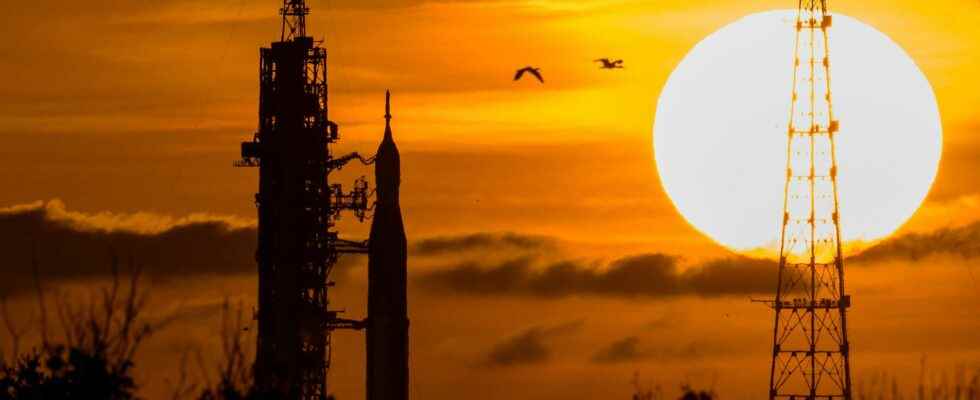For the new Artemis lunar program, NASA and the US Congress called on the SLS mega-rocket, the Space Launch System. Beyond its impalpable physical dimensions, the SLS also has a strong historical connotation. Indeed, there are components that have been used for 83 STS flights.
You will also be interested
[EN VIDÉO] SLS, the most powerful launcher in the world Video presentation of the future most powerful launcher in the world, developed by NASA for the Artemis lunar program.
It is often compared to the rocket lunar Saturn V which took the astronauts of the Apollo missions to the Moon, but in reality the SLS is above all an heir to the space shuttle, in its components but also in its spirit. It had also been originally designed to replace it. And for lack of sufficient budget, certain components of the shuttle were requisitioned.
RS-25 motors
For the first two flights Artemiswith the Block 1 version of the SLS, the Nasa decided to to recycle space shuttle engines, nine engines in all. The reconditioning turned out to be very complex. The Artemis I flight SLS has four, and each has experienced multiple STS flights.
The engine that has flown the most is the RS-25 2045, with twelve STS flights on the clock! It started with flight STS-89 bound for the Mir station, it also transported the astronaut John Glenn when he was a senator (STS-95). The second most experienced engine is the RS-25 2058, with six flights. He delivered the node Harmony (STS-120) and the Japanese Kibo (STS-124) module at theISSand also served on the last flight of the shuttle Discovery. It is moreover the engine of which the failure of a sensor thermal spawned postponement of shooting SLS on August 29.
There is also the RS-25 2056 (four flights) which was used for a maintenance mission of the Hubble Space Telescope in 2002 (STS-109), and the RS-25 2060 which made three flights. It was also used during the very last flight of the Space Shuttle (STS-135) in 2011, just like 2045.
A flying museum
It’s not just RS-25 motors that have been used. Several components of boosters propellant laterals solid have also been used, some dozens of times! There are 73 STS flights in the booster equipment experiments. The oldest component dates back to the very first flight of the space shuttle Discovery in 1984 (STS-41D).
The boosters inherit those of the STS, just like the tanks of the SLS. Even the upper stage is derived from Delta IV rockets. This “low-cost” (yet very expensive) version of the SLS will only fly for the first two Artemis missions. The Block 1B version with modified RS-25 engines and upper stage will take over to return astronauts to the surface of the Moon.
Interested in what you just read?
